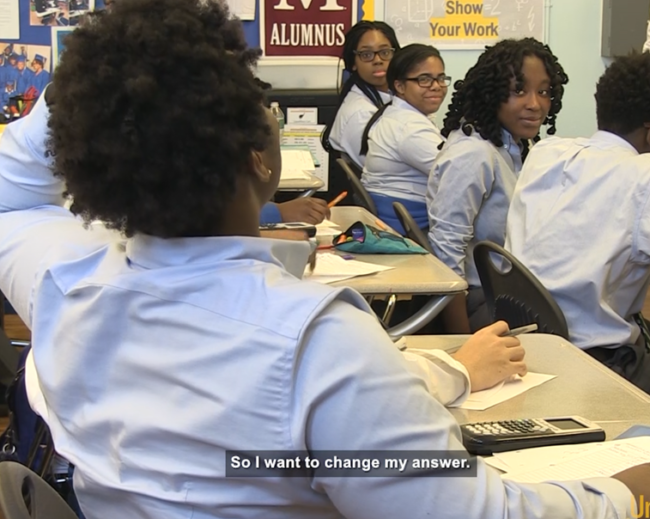07.16.21On Culture and Belonging: An excerpt From the Preface to TLAC 3.0

As many of you know, the release of TLAC 3.0 has been pushed back a few weeks. In the interim I’m going to try to share some useful pieces of the new version of the book here.
The book begins with an important new Preface that discusses some of the reasons and rationales for the techniques in the book, grounded in cognitive and social sciences and the larger discussion of equity and social justice in schools. In this section I discuss why I continue to think that nonverbal social cues among students–for example tracking the speaker–are so critical to the classrooms young people deserve.
Yet another field of study that has been influential to me in writing this book is Evolutionary Biology, the net on which is that the humans who won out in the struggle for evolution won by coordinating in groups and have evolved to be exceptionally responsive to what is required for inclusion in the group—it is of the highest importance from an evolutionary point of view.
We are creatures of culture first, supremely responsive to social norms, and every young person deserves to step into a classroom where social norms are as positive and constructive as possible.
Let me explain what I mean by describing a moment in the life of a student. We’ll call her Asha. She is sitting in Biology class and has just had an idea. It’s half developed—a notion still—but she wonders if she has thought of something that others have not. Maybe this is something smart. She’s a bit scared to share what she’s thinking. Her idea could be wrong or, just as bad, obvious already to everyone else. Maybe no one else cares much about DNA recombination and the fire it has suddenly lit in her mind. Maybe saying something earnest about DNA recombination makes you that kid—the one who raises her hand too often, who tries too hard, who breaks the social code. These sorts of thoughts have heretofore led her to adhere to a philosophy that counsels Keep it to yourself; don’t let anyone see your intellect; take no risks; fit in.
But somehow in this moment the desire to voice her thought overcomes her anxiety. She raises her hand and her teacher calls on her.
What happens next is critical to Asha’s future: Will her classmates seem like they care about her idea? Will she read interest in their faces? Will they nod and show their appreciation? Ask a follow-up question? Jot down a phrase in their notes?
Or will they be slouched in their chairs and turned away, checking their phones literally or metaphorically, their body language expressing their indifference? Oh, did you say something? Smirk. Will the next comment ignore her idea? Will there even be a next comment, or will her words drift away in a silence that tells her that no one cared enough to acknowledge or even look at her after she spoke?
These factors are Stations of the Cross in Asha’s journey. They will influence the relationship she perceives between herself and school and her aspirations. She is a vibrant soul, full of ideas she does not ordinarily share and wondering quietly if maybe someone like her could become a doctor. She doesn’t know anyone who’s done that, but she finds herself thinking about it sometimes.
Obviously, those dreams don’t all come down to this moment, but we would be foolish to dismiss its relevance. It could be the first tiny step on the path to medical school. Or it could be the last time she raises her hand all year.
Yes, it matters whether her teacher responds to her comment with encouragement—but perhaps not as much as what the social environment, the rest of Asha’s peers, communicate. If her teacher praises Asha’s comment amidst scorn and resounding silence from her peers, the benefit will be limited. The teacher’s capacity to shape norms in Asha’s classroom matters at least as much as her ability to connect individually with Asha. Relationships matter, but the social norms we create probably matter more.
That’s a hard thing to acknowledge. It removes us from the center of the story a little bit. But it’s a powerful thing to recognize as well. In many classrooms there is no model for what the social norms should communicate while Asha speaks or after she has spoken and her words hang in the air. Or perhaps there is a model, but it is mostly words—her teacher and maybe her school do not believe that what happens then is within their control.
Is it really their business whether students show an interest in what their classmates say? Imagine what a headache it would be to try to make that happen with hundreds of students, many of whom “just don’t care”? In the end, what happens in this moment and a thousand like it will most likely be an accident: lucky or unfortunate, supportive or destructive, with immense consequences for Asha and her classmates.
Something close to optimal culture, where Asha’s classmates are communicating with eye contact and body language: we are listening; we respect your idea; it interests us; keep raising your hand, does not occur naturally or by accident. It occurs when adults cause it to happen.